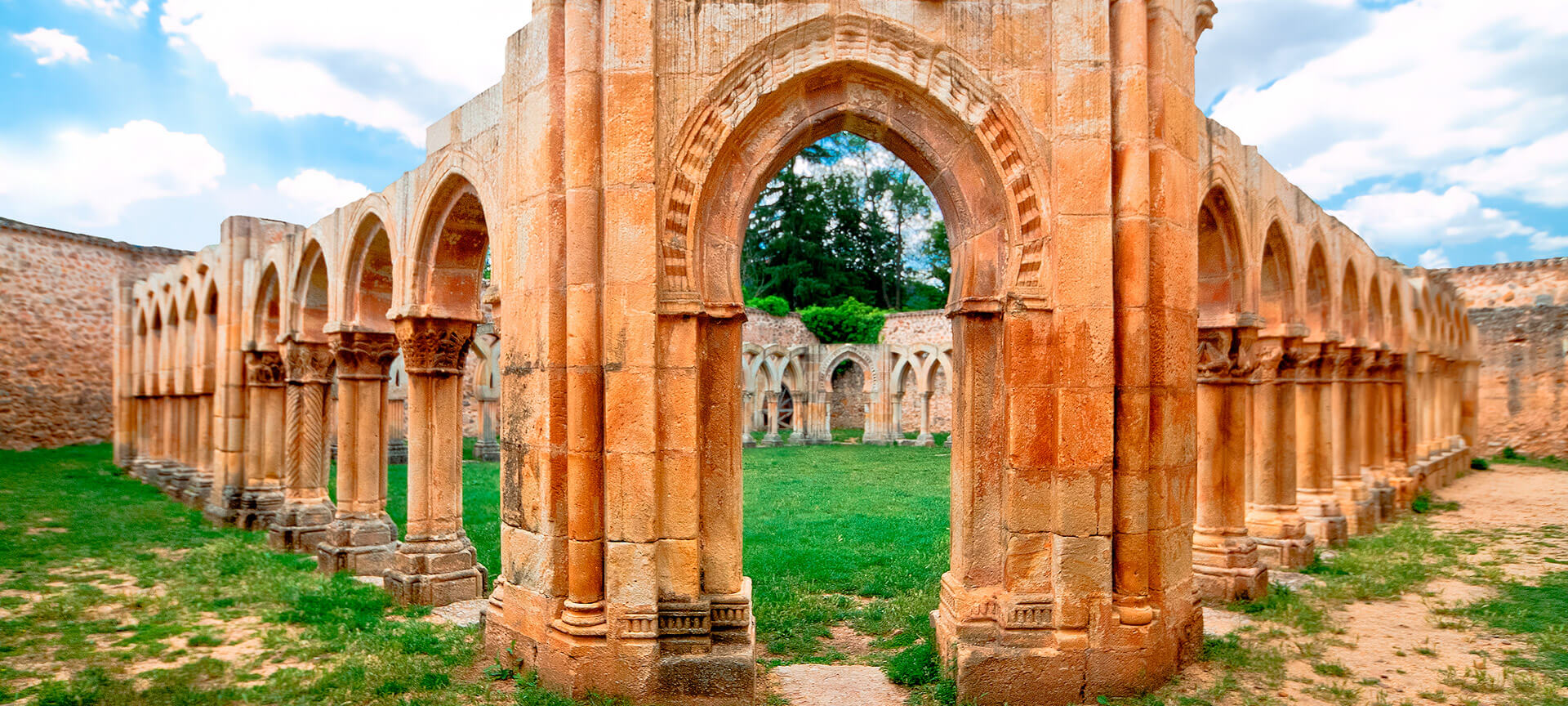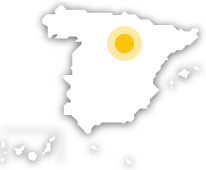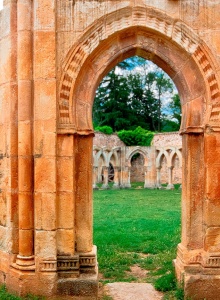In a natural spot presided over the River Duero is Soria, a city which houses an important Romanesque group of buildings in its medieval streets, as well as splendid examples of civil architecture.
The history of Soria is linked to the neighbouring Celtiberian settlement of Numancia, whose inhabitants led a heroic defence of the city against the seige of the Roman Empire ( II c. B.C.). Later, due to its strategic situation, the area was the subject of a battle between Christians and Muslims ( IX c.). After its incorporation into the Crown of Castile, Soria experienced its peak during the reign of Alfonso VIII ( XII-XIII c.) and throughout the whole of the Middle Ages it was an important manufacturing centre based on wool production.
Soria still retains an important Romanesque legacy in its network of medieval streets. In the historic centre of the town is one of the most important churches in the city, the church of Santo Domingo, a beautiful XII century construction whose main front is considered one of the best of the entire Romanesque period.
To the east of the city, near the River Duero, is the procathedral of San Pedro. Built at the end of the XII century and rebuilt during the XVI c., it has a Renaissance main front and three gothic naves. Inside you can admire beautiful reredos, such as the Flemish triptych of the Crucifixion. The cloister, which has been declared a National Monument, is characterised by the three sections of series of half arches supported on columns on which various allegorical scenes are portrayed.
Among other religious buildings in Romanesque style in Soria are the church of Santa María la Mayor, with a Romanesque main front, and that of San Juan de Rabanera. this church, originally from the XII century, denotes certain Byzantine influences. Inside, you can appreciate this oriental tendency in the apse. Also, a reredos executed by the sculptor Francisco de Ágreda and the painter Baltanás attracts your attention.
Meanwhile, the Plaza Mayor, in Castilian style, is flanked by several interesting buildings: the House of the Twelve lineages ( XVII c.), site of the Town Hall, the old town hall and the Tower of Doña Urraca.
Strolling through the streets of the historic quarter there appear noble constructions such as the Palace of los Ríos y Salcedo, and that of the Counts of Gómara ( XVI c.), declared a National Monument and an authentic jewel in Sorian civil architecture. The current site of the Provincial Court is housed in this Renaissance building, distinguished by its stone façade and its large quadrangular tower.
The Alameda de Cervantes constitutes the main walk through the city centre, where you will find the hermitage of la Soledad. In its interior is the Christ of the Shrine, a carving from the XVI century attributed to Juan de Juni.
The Sorian cultural offer has its main reference in the Numantino Museum, which allows you to fins out about the origins of the city and the past of the province through a collection of pieces from various archaeological digs. Its findings include all types of objects from the Paleolithic era to the Middle Ages, from funeral offerings from the Celtiberian age to Numantine ceramics.
On the outskirts of the city are the banks of the River Duero, whose idyllic landscape was the source of inspiration for Spanish artists and poets, such as Antonio Machado. In this place you can find the monastery of San Juan de Duero, where the former Order of the Hospitallers of Jerusalem used to reside. Among its remains you can still find the series of arches belonging to its cloister, the construction of which dates back to the XIII century and reflects the Muslim influence on the Romanesque style. Near this monastery, on the left bank of the river, excavated from the rock is the baroque Hermitage of San Saturio, the patron saint of the city. This small chapel, dating from the XVIII century, presents an octogonal plan and its interior is presided over by a baroque altar.
Food and Wine
Sorian gastronomy has its main allies in pork products and roast lamb. It also conserves other traditionally pastoral dishes, such as fried breadcrumbs (using bread, garlic and pork) and caldereta (a lamb stew). Butter is also one of the most typical traditional products from Soria.
Among the hotel accommodation available in Soria the capital is the Parador, situated in the Parque del Castillo, on the hill where the medieval fortress formerly stood. From this hotel you can admire one of the best views of the capital and the River Duero.
The province of Soria offers interesting routes for enjoying its landscapes and historical-artistic legacy. The Duero Route will take us to towns on the banks of this river. In Almazán, Berlanga del Duero, Burgo de Osma or San Esteban de Gormaz we can get closer to Soria's medieval past. The Canyon of the River Lobos is a place where nature and art meet. Another river, the Jalón, will be our guide to visit Medinaceli, Arcos de Jalón or Santa María de la Huerta, towns with interesting Romanesque and Gothic structures.
The Moncayo and las Icnitas Route will lead us to Numancia, a former Celtiberian hill fort, San Pedro Manrique and Ágreda, a city where the Arab, Jewish and Christian cultures met during the Middle Ages. Interesting examples of popular architecture are shown to us along the los Pinares and Urbión route, in places such as Vinuesa, Salduero or Duruelo de la Sierra. From here you can go up the Urbión Peak (2,226 m.), among pine and beech woods.








